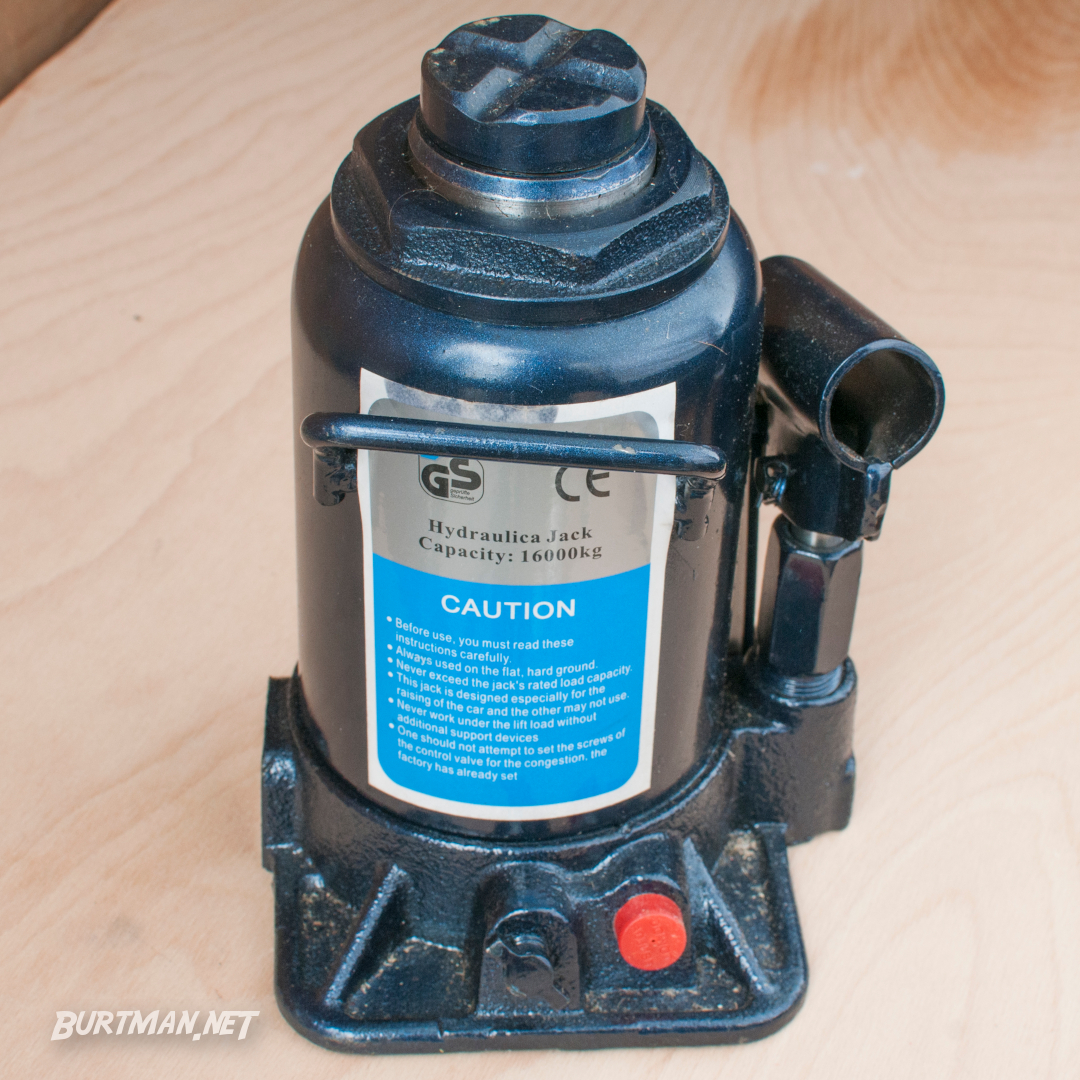Bottle Jack
AKA: Cylinder Jack, Piston Jack
Never work under a vehicle that is supported only by a jack. Always use axle stands to take the weight of the vehicle. Jacks can fail under weight, or because of damage, wear, bad surface quality and so on. The results can be fatal. Always check your jack for signs of excessive wear or damage before using, and lift your vehicle on a flat surface, using the correct jacking points. If you don't know where the jacking points are, consult your owner's manual or look it up online BEFORE using the jack.
When releasing the jack, turn the locking nut very slowly to make sure the pressure is released gently. As soon as the pressure is released, your vehicle will start to come down. Do not rush this process. If you are not sure, check the jacking section of the wheel changing article (link in the details below).
Bottle jacks are less stable than trolley jacks. Ensure the jack is directly below the jacking point and never add random objects to increase height or compensate for unstable ground.
This type of jack is very powerful and portable, but its small size also makes it less stable, so it can't be stressed enough that you *must* ensure a flat jacking surface in order to avoid serious injury.
The bottle jack, like all hydraulic jacks, operates by the following method:
1. Using the slots at the end of the lever arm, tighten the release valve at the front of the jack (near the bottom in this case) to ensure that pressure cannot escape back into the reserve chamber.
2. Insert the jacking arm (the long bar that comes with the jack) into the cylinder (on the right side in this case).
Lift the bar up as far as it can go and then apply downward pressure to push the jack up.
Each time you repeat this motion, the jack will expand slightly. Once the jack is tall enough to be placed under one of your jacking points, you can begin to lift the vehicle. On the pictured model, the top part of the jack that makes contact with the vehicle can be unscrewed to add approximately 10" of extra height to the jack.
If you need still more height, consider placing a solid base beneath the jack, such as a breeze block, or large, sturdy block of wood. If you can't find anything sturdy enough to safely increase the height, do NOT bodge it. Other arrangements will need to be made.
Once the vehicle is at the correct height to work on it, insert the axle stand in a secure place and *slightly* loosen the release valve on the jack to release some pressure. Do this very slowly to ensure safe lowering of the vehicle. The vehicle will lower until it reaches the correctly-placed axle stand, at which point, it should be safe to work on the vehicle.
After working, repeat the steps above to lift the vehicle off the axle stand, remove the axle stand, and *slowly* lower the vehicle back to the ground.






 Back To Tool List
Back To Tool List